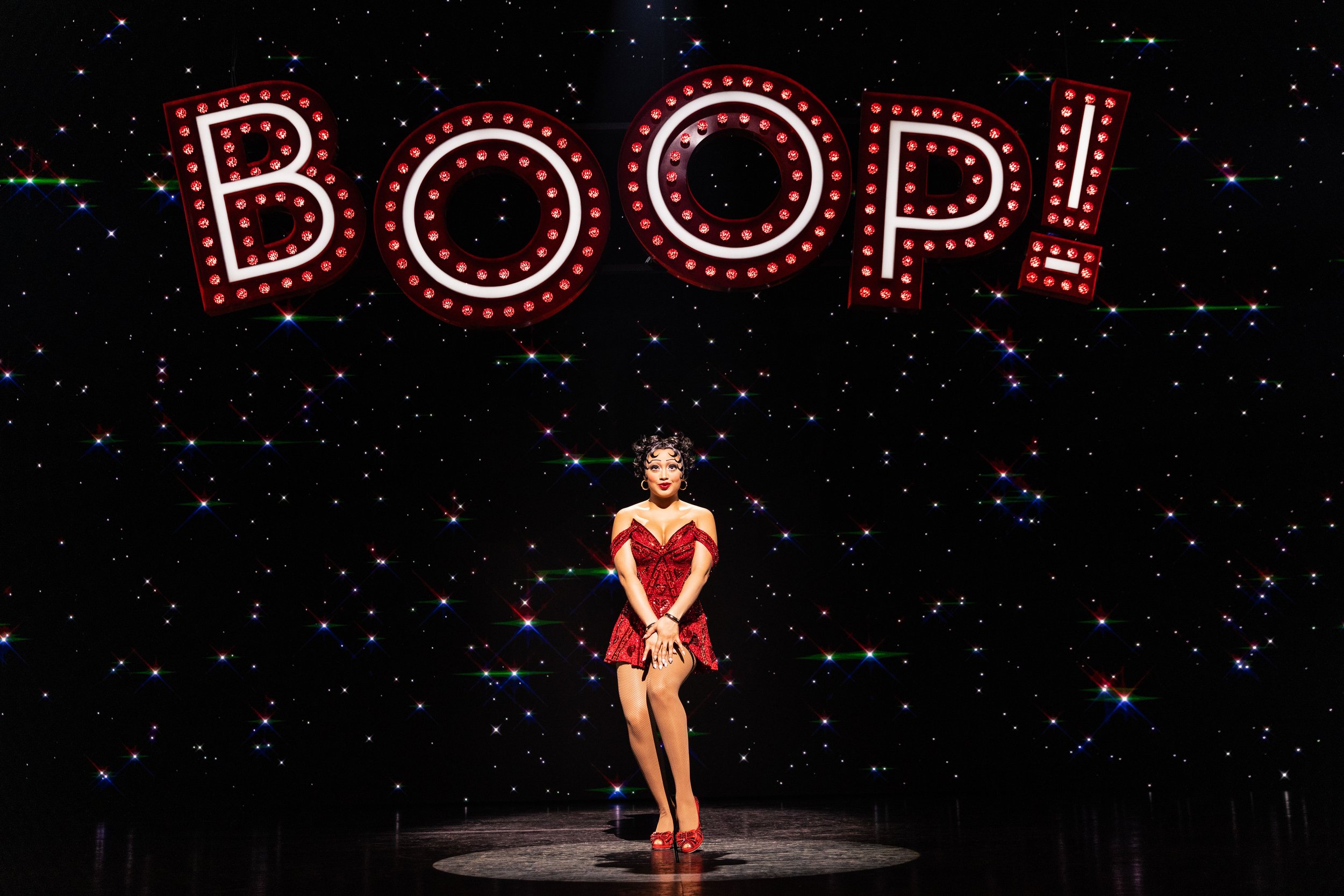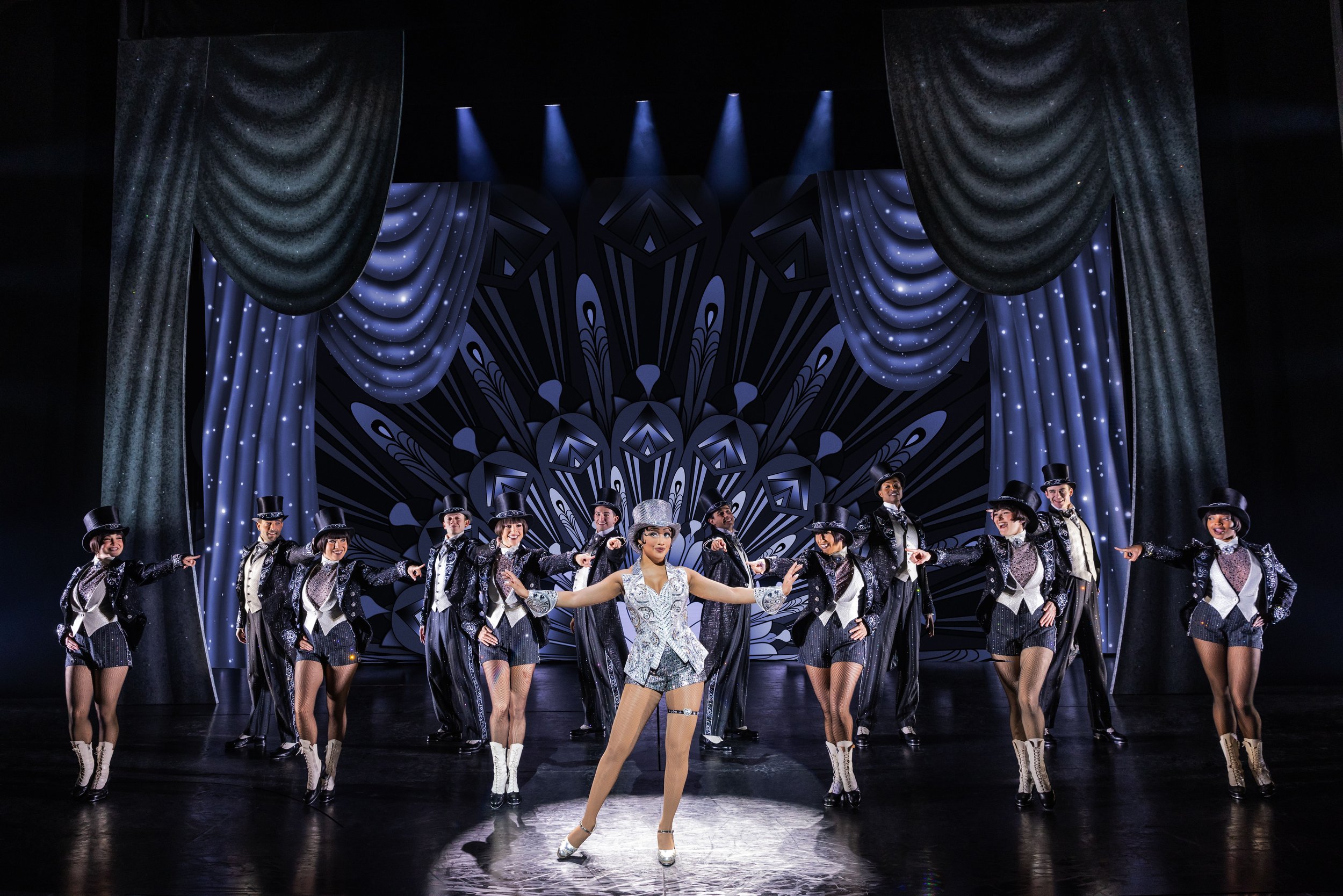Boop! The Betty Boop Musical
In 1930, Betty Boop was the first human female animated cartoon character written and created by Max Fleischer, as most female characters (Minnie Mouse) were animals. The World Premiere, a brand new musical, Boop!, The Betty Boop Musical, is a about a young girl on a journey to find something missing — love. When she does, the world turns to color. Standing the test of time, Boop has always remained positive and a powerful example of women. In the CIBC Theatre production, the main character playing Boop is African-American. But in the Roaring 30s, when the animated Betty Boop came on the scene, Americans were living in the Great Depression, and African-American blacks during that timeframe suffered great hardship. So when people speculated, argued, and defended that creator Max Fleischer created the iconic cartoon character Betty Boop after being inspired by a Black jazz singer in Harlem named Esther Jones(Baby Esther) and whitewashed her to appear white, it raised a few eyebrows.
The debate even went to a New York court when Helen Kane tried to sue Max Fleischer and Paramount Publix Corporation for $250k, claiming that they stole her signature "boop-oop-a-doop" style and the likeness of Betty Boop from her character. Kane lost the case, with one of the primary evidence against her being that Kane’s manager, who also managed Esther Jones, brought her to one of Jones's performances, and Kane mimicked Jones's routine. So, even with historical evidence that Betty Boop originated from Esther Jones but never confirmed by the Max Fleischer and the Fleischer studios that she was black and whitewashed, she was also not a creation derived from Helen Kane, who was white. And the debate on whether she is black or white continues today. But what is not debatable is that for almost a century, Betty Boop has won hearts and inspired fans worldwide with her trademark looks, voice, and style.
As Betty dreams of an ordinary day off to enjoy a world filled with color, the black-and-white star is about to discover her potential without losing her identity. The opening scene starts with Betty performing a routine in Black and White with Boop wearing a stunning silver outfit. She feels undervalued and is on a mission to discover her true worth by exploring her identity, hoping better to understand herself and her place in the world. This is when we meet Grampy, a beloved Betty Boop character known for his enthusiasm and inventive spirit.
He first appeared in the 1935 cartoon "Betty Boop and Grampy" and has been a fan favorite ever since. With his unique appearance - a bald head, white beard, and black nose - and his contagious energy, Grampy is a memorable addition to the iconic cartoons. Boop expressed her frustration to Grampy, a professor who invented several machines; he told her about a machine he created that could take her to the real world. However, he warned her that it might not be safe. Despite the warning, Betty started the machine when Grampy fell asleep and suddenly found herself in the colorful world of New York Comic-Con." Boop's childlike wonder and amazement are fascinating as this black and white cartoon character sees color for the first time, asking a stranger that she met named Dwayne to tell her the names of the vivid new hues. Still, she doesn't want anyone to know she is the real Betty Boop, so she uses the name Betsy, a person on vacation.
Boop symbolizes women's strength, independence, and empowerment and deals with females' inequities. This brand-new music is filled with high energy and is purely entertaining. Rogers turns back the hands of time, making you feel like you were in the 30s watching the real Betty Boop. She was made for this role!
From the book by Bob Martin, with striking lyrics by Susan Birkenhead, Boop has an impressive creative team with a marvelous set design, including the scenic, lighting, sound, projection, hair and wig, make-up, and costume designs, was incredible, and the choreography was fantastic. Director Jerry Mitchell, who directed phenomenon shows like Kinky Boots, La Cage aux Folles, and Hairspray, said that Jasmine Amy Rogers ( National Tour of Mean Girls & Evil" on Paramount+) came into the audition and claimed the role of Betty Boop and multiple-time Grammy®-winning composer David Foster ("I Have Nothing," "After the Love Is Gone," "The Prayer") said that Rogers would become a star — and I concur.
Jasmine, who previously auditioned for the lead role of Boop but felt she wasn't ready, is an absolute star in this production, and this energizer boop, with her beautiful smile and voice, made this show a must-see performance. "Boop" also features a staring cast of Faith Prince as Valentina, Ainsley Anthony Melham as Dwayne, Erich Bergen as Raymond Demarest, Stephen DeRosa as Grampy, Angelica Hale as Trisha and Anastacia McCleskey as Carol Evans.
Tony Award winner for Guys and Dolls, Faith Prince, and Stephen DeRosa were charming as Valentina and Grampy. Ainsley Anthony Melham, who starred as Aladdin in Disney's Aladdin on Broadway and the Australian National Tour, was outstanding as Boop's love interest. Interestingly, Betty Boop's original love interest in her animated series was Bimbo, a male dog, as Boop was originally a female dog. Melham rocked the house with his vocals and dance moves in "She Knocks Me Out." Best known for his appearance on the hit television show "Madam Secretary," Erich Bergen is sensational as Raymond Demarest, the Can Do-Do man running for Major. And Anastacia McCleskey is an influential example of the world's power, acknowledging the wisdom of womanhood. McCleskey provides a notable performance as Carol Evans, a powerful and influential woman who recognizes the value and importance of female wisdom and the inspiring and positive impact women offer to the world.
Another outstanding performance came from Angelica Hale. Making her debut, this 16-year-old soon-to-be superstar, who was featured on the 12th season of America's Got Talent and needed a kidney transplant from her mother, was spectacular. She was that WOW-factor, providing a powerhouse performance and blowing the audience away singing, Portrait of Betty.' Remember her name, as she is a rising star.
“Everything started to change the moment you got here.”
Rogers was phenomenal in the finale of Act One, singing "Where I Wanna Be"; however, Act one pace, energy & appeal seemed to stall when Rogers wasn't on stage, which can easily be fixed by focusing more on the superior performance of Rogers and her growing relationship with Trisha and Dwayne. During the finale of Act One and parts of the second act, evidence that this production favored the narrative in which a jazz singer from Harlem could be referencing Esther (Baby Esther) Jones. Act Two was magical from beginning to end and featured more of Rogers's electrifying talents. It has a more exuberant flow, vivid and lively scenes, and a more engaging narrative. Bringing in the bouncing ball, which visually indicates the rhythm of a song, helps audiences to sing along with live or prerecorded music and was a nice classic touch.
Betty Boop was quite popular back in the day, with 126 theatrical cartoons between 1930 and 1939. She had a series of 90 cartoons and appeared in 36 Talkartoons and Screen Songs series.
⭐⭐⭐1/2
CIBC Theatre Chicago
BOOP! The Betty Boop Musical
Book by Bob Martin
Music by David Foster
Lyrics by Susan Birkhead
Directed and choreographed by Jerry Mitchell
Now - December 24







